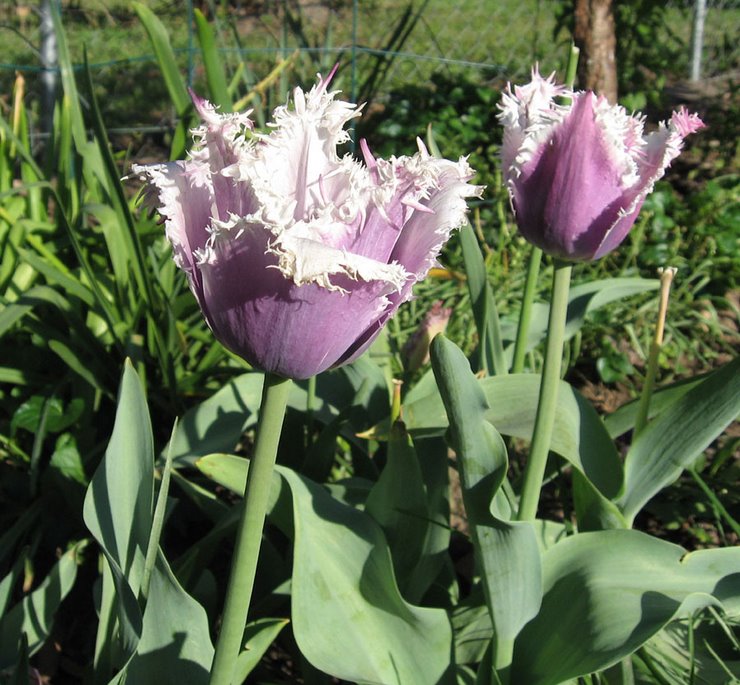I'm looking forward to getting out tomorrow to finish raking leaves. After raking them up into piles, I use my lawn blower/vac to grind them up into small pieces. You could also use a mulching mower, and collect the shredded leaves into the mower bag. Then I bag them up in large trash bags, moistening them a bit as I go, poke a few holes in each bag, and tuck them away in an out-of-the-way spot in the back yard for the winter. In about 6 months or so, those chopped leaves will have become leaf mold, an incredible soil conditioner for my garden.
Next spring, after those six months have gone by, I'll open the bags to find a lovely, earthy-smelling, dark crumbly material. I'll dig a two or three inch layer of it into my veggie and flower beds, where it will help the soil hold a lot more water than unimproved areas. A University of Connecticut study showed that soil amended with leaf mold had increased moisture retention by up to 50 percent. In these times of drought, that's a wonderful gift to my plants, as well as a money savings. Soil amended with leaf mold will be lighter, and easier for plant roots to penetrate. Leaf mold can be used instead of peat moss (plus it's renewable!) to enhance soil.
In other areas of the garden, I use the leaf mold as a mulch, in a thick layer that helps hold in soil moisture, and keep the soil cooler in the summer.
Leaf mold, whether dug in or as a mulch, also helps attract and nurture earthworms and beneficial bacteria in your soil. It does not provide much in the way of nutrition; it is not a fertilizer, but a soil conditioner. You will still need to add compost or other fertilizer to your garden.
So how does this differ from compost? It is made up of only leaves, so it doesn't have the range of nutrients put in to start with that compost would have. Since it is only "browns," carbon-rich stuff, it won't undergo the hot composting process that a real compost heap would have.
I do use some of my fall leaves in my compost, but since fall brings such an incredible bounty of leaves, there are far more than I can accommodate in my composters; more than I have "greens" to balance in creating compost. By making leaf mold, I put all those leaves to good use. Besides, it's a lot less work for me!
Another way to make leaf mold is to simply put the leaves into a large bin of rabbit fence or chicken wire to keep them from blowing around, dampen them, and leave them for about a year. The pile should be at least three feet wide and tall. Since they are more open to the air, the leaves will tend to dry out, which slows the process. You'll need to check the moisture level from time to time. The pile needs to be about as damp as a wrung-out sponge. Some people cover them with a plastic tarp, or line the enclosure with cardboard or plastic, to help keep the leaves consistently moist.
Some gardeners simply rake fall leaves and move them directly to garden beds to use as a mulch over the winter. The leaves break down slowly in place. This does present one drawback, however. Fresh leaves as they break down, draw nitrogen from the surrounding soil to use in the process, thus robbing nearby plants of the nutrients they need. Unprocessed leaves on garden beds can therefore reduce plant growth and vegetable yields. Leaf mold has already broken down part way, and will not do this.
Now, for the allergy considerations on leaf mold. Leaf mold will not bother most people. But someone with a mold allergy may have a problem if they inhale the dust from handling leaf mold. Handling leaf mold will expose you to mold spores. A "hot" composting process is primarily a function of bacteria, while the cooler (and slower) decomposition of leaf mold is done by fungi. That's why it needs to be kept moist, as fungi (such as molds) need moisture. So I take simple precautions such as wearing a dust mask, covering my hair,
and washing my face, hands, and clothes when I am done working with
it.
Raking leaves is one of those fall chores a home-owner has to deal with. But making leaf mold turns that chore into a chance to make a big difference for your garden.

No comments:
Post a Comment